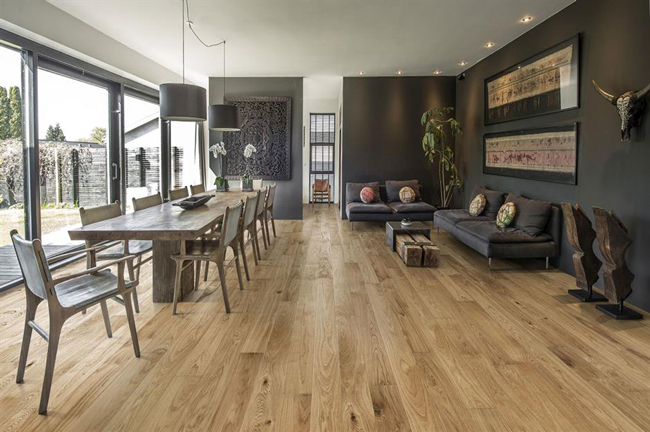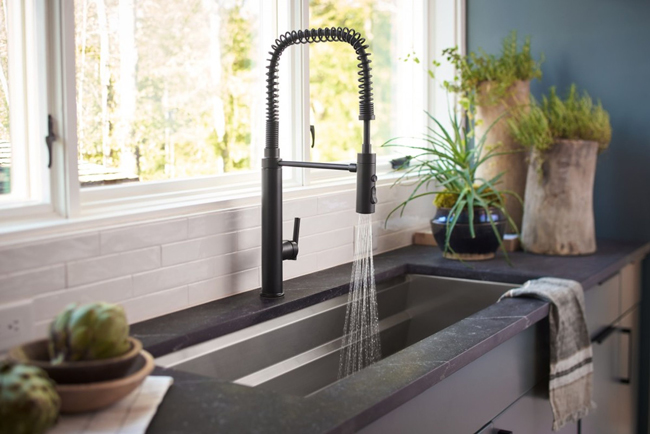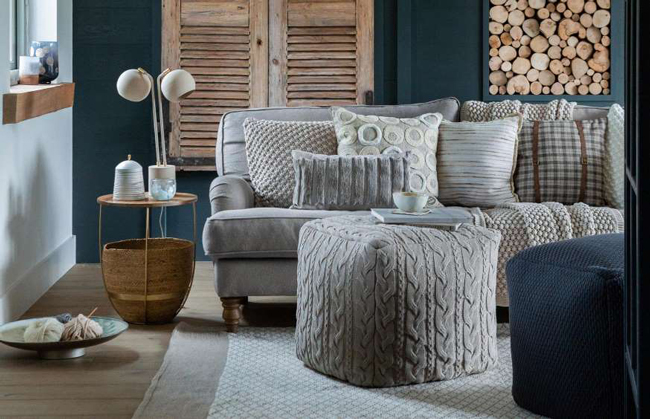
Comfortable and inviting, this sitting room has been furnished with thoughts to sustainable living.

Line kitchen shelves with containers that can be reused and refilled.
It is a puzzling truth that sometimes we need to take a few steps backward in order to move forward. We are experiencing just that today as we endeavor to undo the damage that an extreme overload of plastic products has created. At this point it is difficult to imagine life without plastic bags, containers, toys, furniture … the list is endless. In the 1967 iconic film, The Graduate, Benjamin who was played by a young Dustin Hoffman has just graduated and has no idea what he’s going to do next. At his family’s celebratory party, a neighbor determines to guide Ben with this advice. “There’s a great future in plastics. Think about it.” Well, Benjamin became far more interested in Mrs. Robinson, but the advice was taken up by manufacturing companies the world over. No thought was given to the future; experts now predict plastic garbage will take up to 1,000 years to break down, polluting land and water as they do. Thankfully, we are all becoming aware and our outlooks are changing.
Author and stylist Selina Lake has taken on the challenge of making home eco-friendly as well as aesthetically pleasing and practical. In her book, Natural Living Style: Inspirational Ideas for a Beautiful & Sustainable Home, Ryland, Peters & Small 2019, Lake has solutions that will help us all to turn back the clock and live life minus the plastics plague.
If you are of a mind to live a more sustainable life, Lake presents alternatives for everything from building materials to decorative elements, furnishings and storage. Wood, glass and metal are recyclable materials that can be repurposed in your own home or passed along to shops that deal in secondhand goods. When decorating, check that your paint is eco-friendly – water-based and low VOC. Whether it’s wallpaper, a carpet, or a sofa, research how what you buy is made. Good manufacturers are mindful of the educated consumer and the need to produce their goods in a responsible, sustainable manner.
The author relates that fibres harvested from trees, plants and shrubs are among the most sustainable and eco-friendly materials available. Bamboo, cork, sisal and rattan are excellent options for flooring and furniture, baskets and tableware. Organic cotton, linen, wool and hemp are natural fibres that bring comfort and a lovely mix of textures to home textiles. Hemp upholstery fabric is very similar to linen and even more durable.
Food preparation and storage is a plastics mine-field. Not necessary and not pretty! The photo seen here of an open-shelved kitchen is captioned with plastic-free tips. Choose ceramic storage tubs with lids, recycled glass jars, vintage tins and crockery. Take your own shopping bags and shop at bulk food stores so that you can use and refill without waste.
Throughout the book, Lake has easy DIY projects that serve as guides to living sustainably. Make your own linen shopping bag, or a hemp garden tote. Sew up fabric food covers by cutting out circles two inches larger than the bowls you are covering. To ensure a snug fit, stitch elastic along the edge of the circles, pulling the elastic taut as you sew.
Lavender soy candles make a thoughtful gift as do natural firelighters. For the firelighters you need soy wax flakes, small metal tart tins and natural finds such as pinecones dry leaves, twigs, lavender sprigs, dried berries, straw and wood shavings. Fill each tin with wax, heat in oven till melted. Push in a variety of your collected ingredients, let cool, pop out of tins and display beside the fireplace.
Beautifully illustrated with photography by Rachel Whiting, Natural Living Style will motivate you to take the next steps to living well, happy in the knowledge that you are making a difference now and for future generations.




